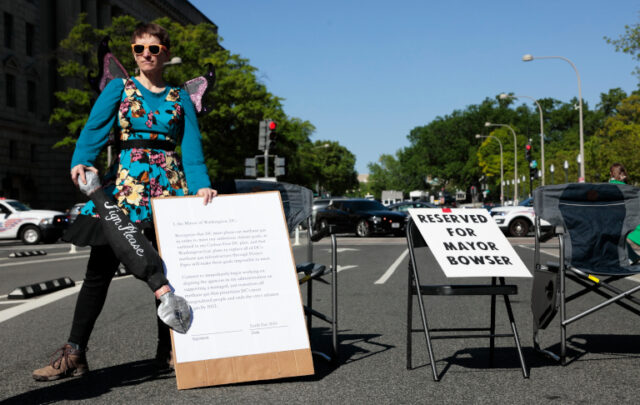The tasks that need doing require money, resolve, and ingenuity–and they are too big to be done by government alone. They call for fundamentally new philosophies of land, air and water use, for stricter regulation, for expanded government action, for greater citizen involvement, and for new programs to ensure that government, industry, and individuals all are called on to do their share of the job and to pay their share of the cost. — Richard M. Nixon[i]
Long promised, the Trump administration has now issued its final revisions to the National Environmental Policy Act (NEPA or Act). The changes are among the most aggressive and widespread deregulatory actions taken to date by an administration that has already moved to rescind or substantially revise 100 environmental regulations.
Signed into law by President Nixon in 1970, NEPA is a cornerstone of the nation’s environmental protection framework. The Act requires the government to assess in varying degrees of detail major federal agency actions that potentially impact the environment and provides for public involvement in the regulatory process.
The Act has proven particularly vexing to a president who has set his sights on rolling back the nation’s environmental framework to a time before the Nixon administration. The new rule is an attempt at reducing the number of projects requiring an environmental review, speeding through projects before their potential impacts are known, and curbing the public’s involvement in the NEPA process.
A bit of NEPA history
NEPA came into existence following what was then the largest-ever oil spill off the Santa Barbara, California coast. The spill, flowing from an offshore oil rig, turned pristine beaches into oil slicks on which laid thousands of dead animals. Photos of the disaster spread across the front pages of newspapers. Along with other events of the time like the Cuyahoga River fire, the spill helped to galvanize a nascent environmental movement.
The Act, as originally written, mandated a detailed report on the potential environmental impacts of all major projects involving federal funding or permitting and, under subsequent court interpretation, allowed the threat of private lawsuits to ensure compliance. Projects covered by NEPA include the construction of oil and gas pipelines, highways, bridges, airports, natural gas export terminals, and solar and wind electric generating installations.
Although of one mind when it comes to their views on activists, Messrs. Nixon and Trump are polar opposites when it comes to their positions on environmental regulation. In addition to the passage of the NEPA Act and creation of the Council on Environmental Quality (CEQ), Nixon is rightfully credited with having sent to Congress a plan to consolidate the many environmental responsibilities of the federal government under one entity—a new Environmental Protection Agency (EPA).
Working with Democrats and Republicans in Congress, Nixon signed into law the multiple pieces of legislation that together, with NEPA, serve to this day as the foundational elements of the nation’s environmental protection framework. These include:
- Clean Air Act Extension of 1970. These amendments gave the newly created EPA the power to create and enforce regulations to protect people from airborne pollution known to be hazardous to their health — specifically targeting sulfur dioxide, nitrogen dioxide, particulate matter, carbon monoxide, ozone, and lead.
- Safe Drinking Water Act of 1974. The law protects the nation’s lakes, streams, rivers, and wetlands. The Act was proposed by Nixon and passed by Congress in 1974 but signed by President Gerald Ford. It was enacted after scientists discovered widespread contamination in American tap water.
- The Endangered Species Act of 1973. President Nixon called upon the 93rd Congress to enact comprehensive endangered species legislation. Congress, working with a team of lawyers, scientists, and the first head of the Council of Environmental Quality, Russell Train, drafted and enacted this landmark legislation. It has been called the Magna Carta of the environmental movement.
Nixon’s support of environmental laws and regulations was political rather than philosophical. The real force responsible for Nixon’s considerable environmental legacy was his Chief Domestic Advisor, John Ehrlichman.
In many ways, the Nixon era bears a resemblance to today’s climate politics. Nixon and other political leaders, for example, cast environmental action as a binary, i.e., doing something to protect the environment would mean not doing something else. According to Ehrlichman, Nixon had an “instinctive distrust” of the environmental issue he was preoccupied with the high cost of antipollution laws and frequently said boosting employment should take precedence over the environment. Suggestions that protecting the environment would produce jobs were suspect in Nixon’s eyes—as they are in many of today’s environmental and clean energy opponents.
Voter surveys of the time showed that events like the oil spill off the California coast energized voter interest in environmental matters—in much the same manner as forest fires and more frequent and severe hurricanes are convincing voters of the reality of climate change today.
In 1965 only a third of Americans surveyed agreed that air and water pollution were serious problems where they lived; by 1967, the figures passed 50 percent. They reached roughly 70 percent in 1970. Sierra Club membership between 1965 and 1970 tripled to more than 100,000, and Democratic and Republican politicians were falling all over themselves to claim the mantle of environmental advocacy[ii].
The great question …is, shall we surrender to our surroundings, or shall we make our peace with nature and begin to make reparations for the damage we have done to our air, to our land, and our water?— Richard M. Nixon
Although having very different opinions on the role of governments in protecting the environment, Nixon and Trump would be in complete agreement when it comes to their feelings about environmental advocates. According to accounts, Nixon believed that environmentalists wanted to go back and live like a bunch of damned animals. He said of them: They’re a group of people that aren’t really one damn bit interested in safety or clean air. What they’re interested in is destroying the system. The statements are not far off of Trump’s claim that today’s activists are lefty losers who are proposing to re-enter the job-killing unfair Paris Climate Accord, which will cost our country trillions of dollars.
There’s no telling what more Nixon and his environmentally woke Chief Domestic Advisor would have done for the cause of environmentalism—had the one not resigned the presidency and the other been shipped off to jail. Whatever their flaws, however, the nation owes them a debt of gratitude for their environmental accomplishments.
Compare their legacy to Trump and company efforts to undermine not just NEPA but the other major environmental laws passed during the Nixon presidency. It was a different time back then. A time when Democrats and Republicans saw bipartisanship as a win-win for themselves and the nation. An era in which a president’s closest advisors took principled stands.
Their own worst enemy
Ask Mr. Trump who his enemies are when it comes to blocking efforts to deregulate the environment. He is likely to list in no particular order Democratic socialists, advocacy organizations like the League of Conservation Voters, blue-state governors and their attorneys general, blue-city mayors, and judges appointed by Democratic presidents.
Trump and company need no help when it comes to botching efforts to deregulate the environment back to a time before the Nixon Administration.
The administration’s win-loss record when taken to court over any of the 100 climate-related regulations it has attempted to rescind or revise is in a word–abysmal. Something for which Mother Nature and green new dealers everywhere are grateful.
According to the Institute for Policy Integrity, Trump and company have a litigation record of 57 losses versus seven wins in cases involving the environment, agriculture, and pesticides that have been decided through July 15, 2020. Overall, this administration has prevailed against challenges to its authority only ten percent of the time versus the 70 percent overall average of other administrations.
The administration has lost in court for multiple reasons. In some cases, an agency’s decision that no environmental impact review was necessary was based on the faulty contention that this president’s power is unimpeachable. At other times, the issuing agency failed to allow the public to weigh into the process. In other instances, the courts found that the government’s impact statements failed to calculate the cost and benefits accurately or identify alternative options as required by the Act.
Given the outcomes in those cases and Trump’s approach to governing, it is hardly surprising that the NEPA revisions are an effort to conform the law to the administration’s actions rather than its actions to the law.
The Trump administration’s efforts to gut key NEPA provisions
The administration has two principal objectives in revising NEPA rules. First, it wants to reduce the number of projects subject to the preparation of environmental assessment (EA) and the much more detailed impact statement (EIS).
NEPA covers major federal actions. The courts have traditionally interpreted the phrase broadly, and agencies have generally followed suit when deciding whether a NEPA review is required.
The revised rule defines what constitutes a major federal action by defining what it is not–size matters under the revised regulation. If the federal government’s financial contribution is minimal relative to overall project funding, then a NEPA review is unnecessary according to the rule change.
Equally, if the government’s involvement in the project is so limited as to prevent it from controlling its outcome, then the project can be excused from any NEPA review. The new rule allows agencies to decide for themselves whether an action is major or minor. The allowance potentially distances the agencies from judicial precedence and will undoubtedly be challenged in court by blue states and environmental groups.
The guidance given to the agencies by the White House Council on Environmental Quality (CEQ) makes it easier for them to decide that a NEPA review is unnecessary. CEQ is advising agencies that effects should generally not be considered if they are remote in time, geographically remote, or the product of a lengthy causal chain. (emphasis added)
To see how Trump’s revisions might play out in a real-world situation, consider the following circumstances. A 1,100-mile oil pipeline project requires a permit from the US Army Corps of Engineers to cross a small lake. The crossing involves burying a one-mile stretch of the pipeline below ground and under the bottom of the water. The lake is a near-by community’s only source of drinking water.
Without permission to make the one-mile underground crossing, the project’s viability would drop dramatically—if not totally. It would all depend upon the availability of alternate routes. What was it that Franklin said about the loss of kingdoms for want of a nail?
Under the old rule, the Army Corps would be obligated to undertake a NEPA review–at least an EA to determine if a full-fledged EIS were necessary. An EA is an initial analysis of an action’s potential to have significant environmental effects. While preparing an EA, an agency must consult with other agencies that may be affected or have jurisdiction over part of the proposed action and with the public “to the extent practicable.”
Examples of the project’s potential effects would include the climate and environmental impacts of drilling the oil or gas that would be flowing through the pipeline. There would also be possible leakage of methane—a greenhouse gas 28 times more potent than carbon at trapping heat—at the wellhead and along the 1,100 miles of pipe.
Under the new rule, the Army Corps of Engineers would have ample reason to exclude the project from a NEPA review. It would justify the conclusion that federal participation in the project met the definition of minimal by comparing the one mile of underground piping to the 1,099 other miles of the project. From there, the Corps would declare that any expense is miniscule compared to the overall cost of the project. The decision would also reference CEQ’s guidance, indicating that any impact that might occur would be remote in time and, in the case of climate change, only a small link in a long causal chain.
The second objective of the revised rule is to reduce the length of time it takes to complete the NEPA review process, along with its attendant costs. A Department of Energy (DOE) report found that the average time to complete an EA in 2015 was 21 months, at an average cost of $386,000. According to the report, an EIS during the same period took 49 months on average to complete at an average cost of $4.19 million.
The administration looks to achieve its second objective in two more tangible ways than a change of definition. The new rule sets definitive time limits of one year for an EA and two years for the more detailed EIS. It also sets hard page limits of 75 for assessments and 150 to 300 for impact statements[iii].
Monetary requirements have also been included in the new rule that could have a stultifying effect on the participation of low-income communities in the NEPA process. The regulation now requires communities challenging a project to submit detailed, technical comments. It could require hiring attorneys and scientific consultants. Most disturbing for low-income, at-risk communities of color, the revision speaks of the payment of a bond before filing a legal challenge to an agency’s action.
Where to from here?
Two possible fates are awaiting the NEPA revisions. The one most certain is that the new rule will be challenged in federal court by blue states and environmental activist organizations, just like every other of Trump’s deregulatory efforts have.
It’s always tricky to speculate on what a court might decide in a case like this. However, it would not be unreasonable to think a court would—at a minimum–view the hard page and time limits as arbitrary.
Strong arguments could also be made that the way the revised rule whittles down the definition of a major federal action is at odds with the Act. The accompanying CEQ guidance having to do with remoteness and long-chain causality would lend credibility to the argument. The courts have generally chosen to define the phrase major federal action in broad terms—broad enough to include climate-related impacts.
The second possibility largely depends upon the outcome of the 2020 November federal elections. A Democratic victory in November could mean the NEPA revisions would be rescinded outright without a new rulemaking—a process that would take years. However, for that to happen, the Democrats would need to take control of Congress and the White House.
The Congressional Review Act (CRA) permits the legislature to repeal a regulation by a joint resolution of disapproval signed by the president if it is done within 60 legislative days of the rule coming into force.
Because the effective date of the revisions is September 14, 2020, it is conceivable that Congress will not meet a total of 60 legislative days between then and when the 116th Congress adjourns[iv].
The Republicans used the CRA to their advantage following Trump’s election in 2016. During the first days of the 115th Congress, 16 regulations were repealed, including the Stream Protection and the Alaska National Wildlife Refuge Rules.
Should the Democrats capture control of the executive and legislative branches of the federal government, it is incumbent upon them to use their majority position to better advantage for the environment than they did in 111th Congress.
It’s time to stop making climate policy by presidential fiat and judicial maneuvering
All that Democratic congressional majorities and a Biden administration can be sure of are two years of opportunity to set the nation on the path to a low-carbon economy. They must resist the urge to pile new national climate policies on a foundation of environmental laws passed a half-century ago that need updating.
The policy priority of a Democratic government must be to repair and stabilize the foundational laws laid during the Nixon era in such a manner as to shield them insofar as possible from the ebb and flow of politics and an increasingly conservative federal judiciary.
In the case of NEPA, for example, Congress must define more clearly what a major federal action is and limit in clear and concise language the ability of the next climate-conservative government from reinterpreting the definition by executive order. In the case of the Clean Air Act, the endangerment finding on which EPA’s obligation to regulate greenhouse gases should be written into the legislation.
What Presidents Obama and Trump have tried to do through rulemakings, a Democratic Congress and president must now do through amendments to the underlying laws in language clear enough to satisfy the increased number of textualist judges on the federal bench.
*************************************
[i] The 300 page limit is for proposals of unusual scope or complexity.
[ii] For a complete discussion of the CRA clickhere.
[iii] State of the Union Message to Congress 1970
[iv] Richard Nixon and the Rise of American Environmentalism, June 2, 2017
Lead image: National Archives and Records Service






